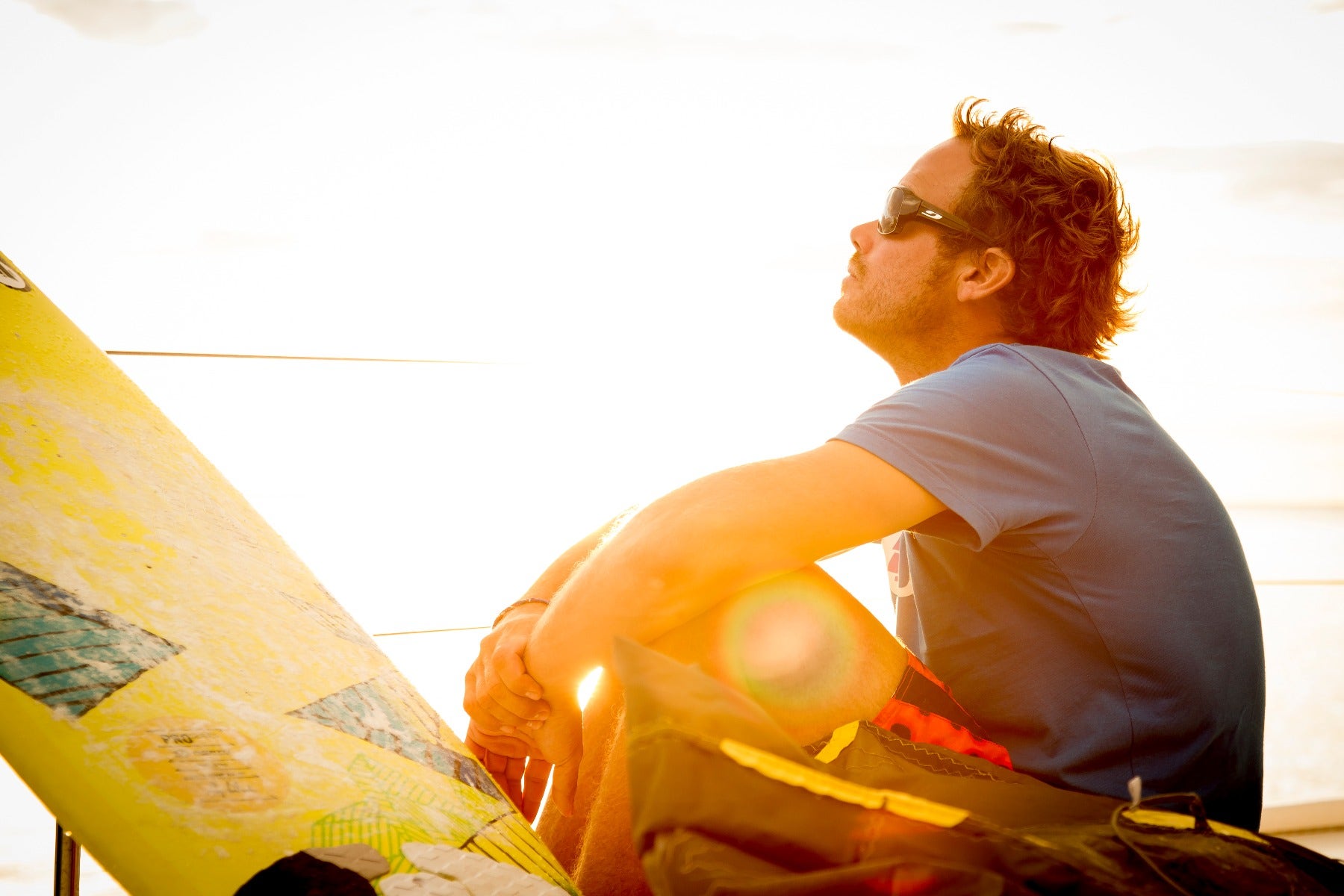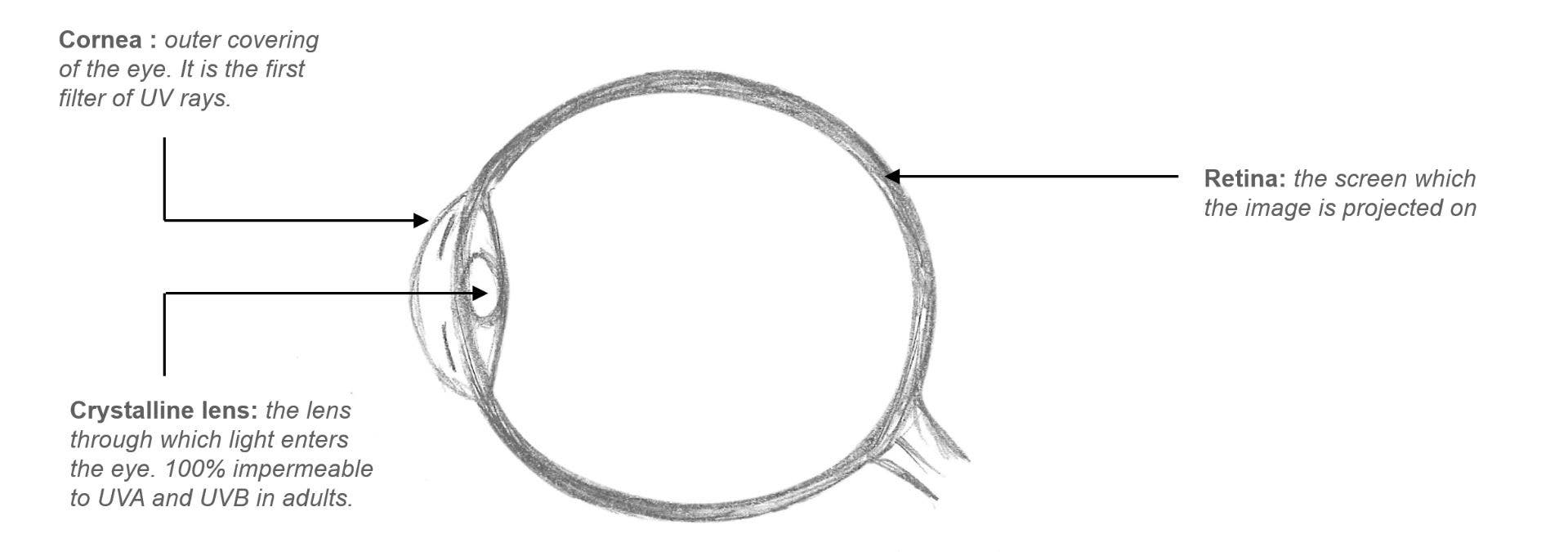We use cookies to make your experience better. To comply with the new e-Privacy directive, we need to ask for your consent to set the cookies. Learn more.

The sun and our eyes
Training on the dangers of sunlight and protection of our ocular system
INTRODUCTION
Sunlight is vital for all of us. However, our eyes are very sensitive to it and it is essential to protect them properly.
A specialist in solar protection in high-risk environments and extreme conditions, Julbo has been providing its expertise to people who love to look at the world for over 120 years. Julbo develops its frames and lenses through a combination of innovation and careful attention to detail.
This presentation contains essential information on the dangers of sunlight and how to protect against it. Because your eyes are unique and the world needs your vision.
THE EYE
The eye is an optical system consisting of a crystalline lens, transparent media and a screen (the retina).
Eyes diseases
Damaged cells in the eyes are replaced over time...
... but the replacement process becomes less effective, resulting in serious or even irreversible diseases:
- Ophtalmia (snow blindness): inflammation of the cornea –sensation of «grains of sand» under the eyelid, vision problems.
- Conjunctivitis
- Long-term problems: Cataracts, retinopathy, age-related macular degeneration (AMD), etc.
Sunlight and potential hazards
The sun emits visible and invisible electromagnetic waves of different lengths
nm = nanometer
1 nm = 1 millionth of a millimeter
Invisible light
Infrared light (IR): 780 -1000 (nm)
These low-energy invisible rays are not directly harmful but they do produce heat. They heat the eye tissue.
Infrared light reduces the protective effect of tears.
HAZARDS :
Burning of the eye through prolonged exposure is increased at high altitude as humidity levels are low.
Ultraviolet light (UV): 200 -380 (nm)
high-energy rays are very harmful. They even have an effect in cloudy weather. Clouds absorb no more than 10% of UV rays.
-
UVA : 315 - 380 (nm)Moderately harmful. They cause light pigmentation of the skin.
- UVB : 280 - 355 (nm)
Extremely harmful (1000 timesmore aggressive than UVA), they result in tanning and premature ageing of theeye and skin.
- UVC : 100 - 280 (nm)
These rays are absorbed by the ozone layer.
HAZARDS
- Molecular breakdown
- Corneal opacification
- Cataracts: clouding of the crystalline lens
- Snow blindness
Visible light
- direct radiation,
- diffuse radiation (by the atmosphere): 6% more than direct radiation
- reflected radiation (by the ground): between 4% and 90% of light is reflected depending on the type of ground it hits.
- snow reflects up to 90% of the sun’s rays,
- water reflects up to 20% of the sun’s rays,
- sand reflects up to 30% of the sun’s rays.
HAZARDS
- Dazzle, fatigue
- Hinders and temporarily reduces visual capability.
PROTECTION AGAINST SUNLIGHT
- Block 100% of UV radiation
- Prevent glare from visible light
- Have sufficient mechanical resistance (impact test)
- Be of sufficient optical quality (optical class 1 or 2)
| Category | Application | Transmission |
| 0 | Comfort | 80 to 100% |
| 1 | Low Light Levels | 43 to 80% |
| 2 | Average Light Levels | 18 to 43% |
| 3 | Strong Light Levels | 8 to 18% |
| 4* | Exceptional Light Levels | 3 to 8% |
Sunlight filters: materials
| Material | Refractive Index | Production | ABBE Number | Density | Resistance | Surface Finish |
| Verre Minéral | 1,5 - 1,8 | Cast | 42 - 59 | 2,5 | + | + |
| CR38 | 1,5 | Cast | 58 | 1,3 | -- | - |
| MR8 | 1,6 | Cast | 42 | 1,3 | - | ++ |
| PC | 1,59 | Injected | 32 | 1,2 | + | + |
| NXT | 1,53 | Cast | 45 | 1,1 | ++ | - |
Sunlight filters: colors
Different lens colors are particularly suitable for specific environments or sports.
 |
Yellow/Brown: Increases contrast in most natural environments |
 |
Grey: Colors look natural |
 |
Red: Increases contrast in most natural environments |
 |
Green: Increases contrast for certain sports (golf, hunting) |
 |
Copper or pink: Increases contrast for driving |
Sunlight filters: surface coatings
Coatings applied to the inside and/or outside of lenses are used to enhance their properties.
Types of coating:
Sunlight filters: polarization
When light rays hit a flat surface (car windscreen, water, snow, asphalt, etc.) they spread out in all directions.
A polarized lens:
CHILDREN’S EYES
Children’s visual health is vitally important. They should be protected from the irreversible damage that the sun can cause:
- The crystalline lens in children is permeable to UVA, only becoming impermeable in adulthood.
- Damage caused in childhood is cumulative and contributes to disease in adulthood.
Choosing the right sunglasses for your child is essential for preserving their visual health. More information and advice in our educational document "The dangers of the sun for children's eyes"


